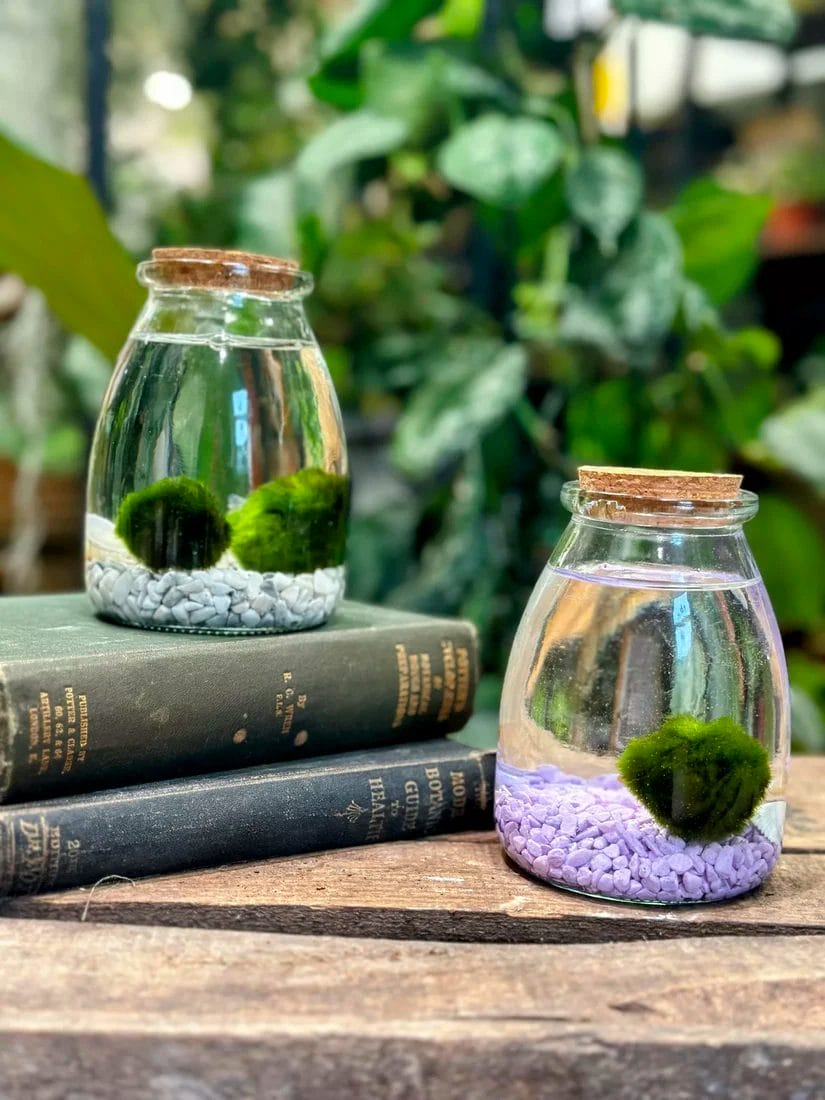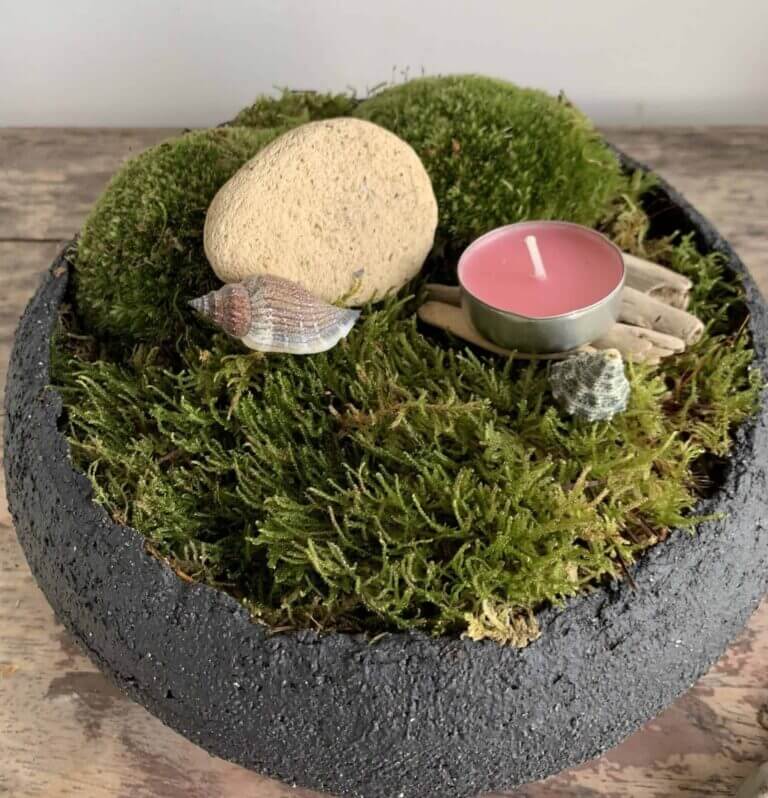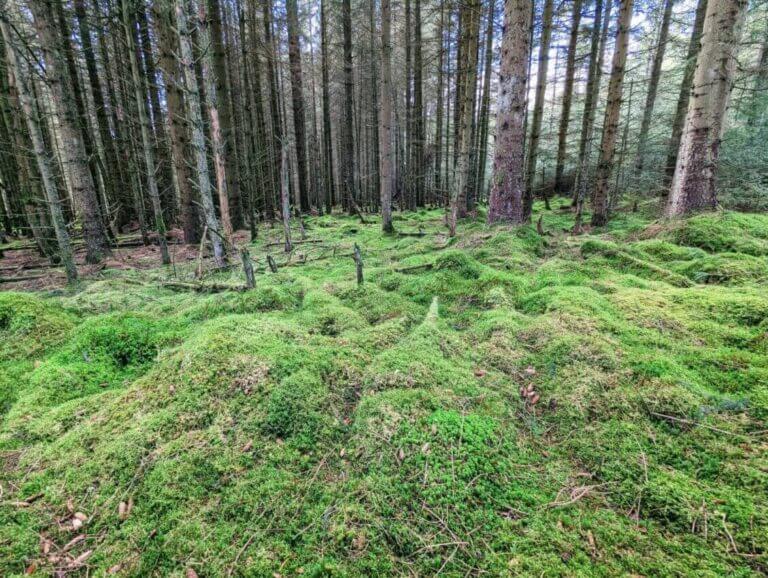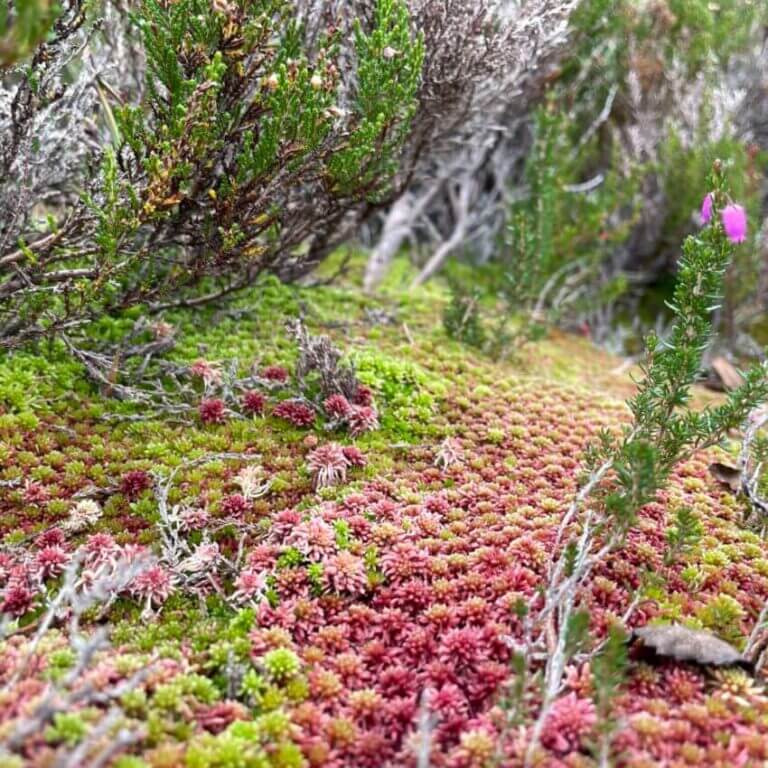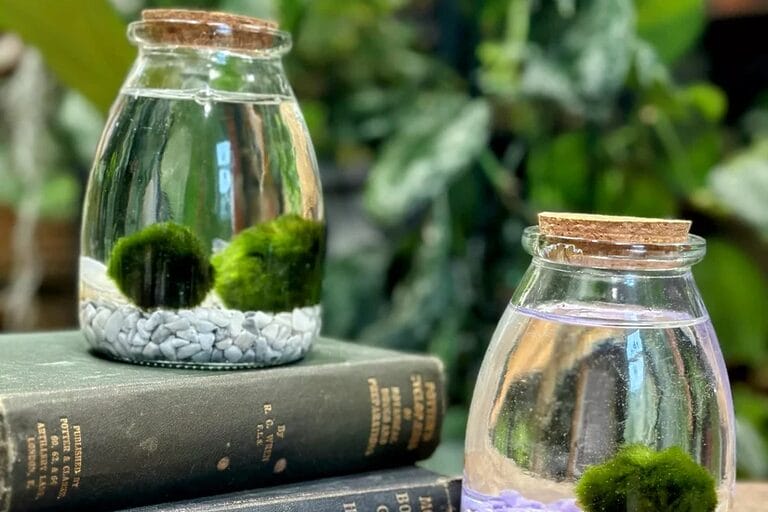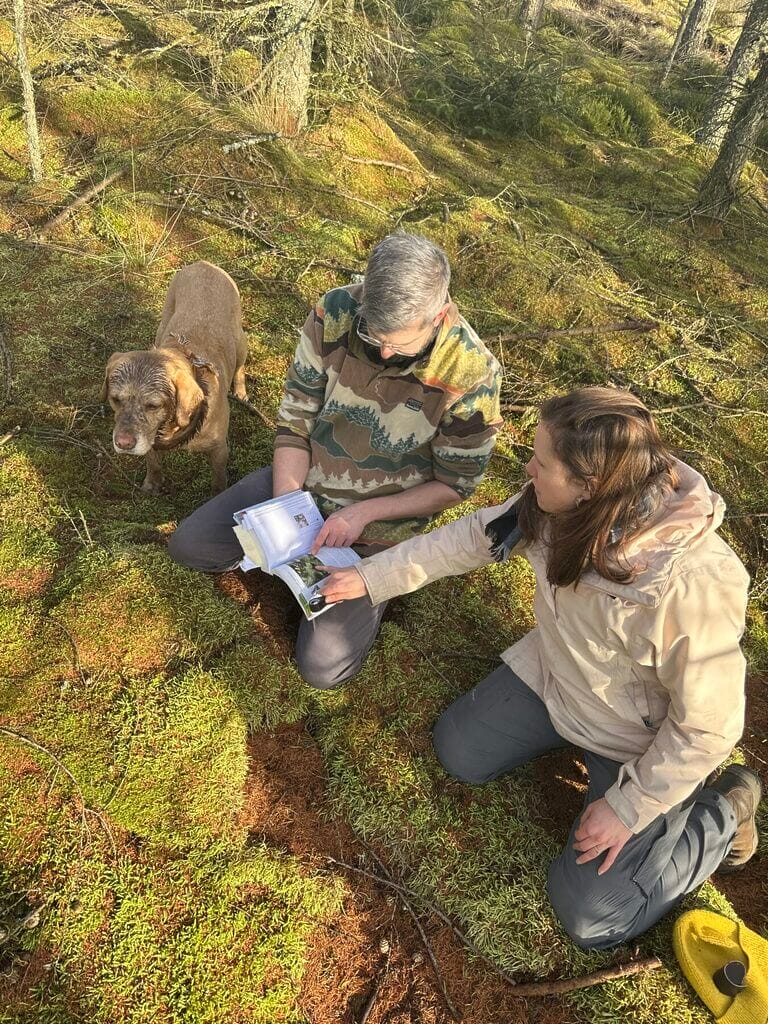Difference Between Peat and Sphagnum Moss and Our Sustainable Harvesting Practices
Difference Between Peat Moss and Sphagnum Moss: A Guide to Sustainable, Peat‑Free Gardening
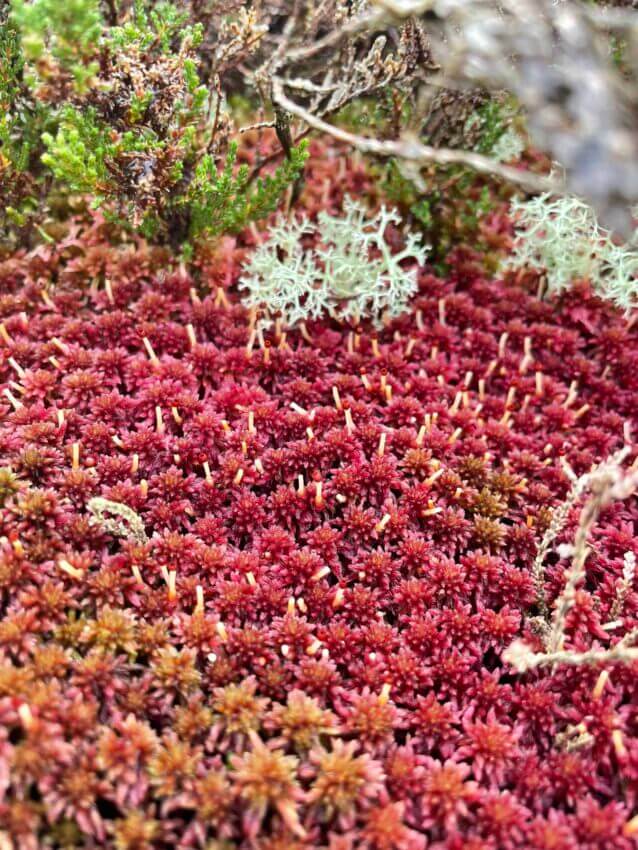
- Difference Between Peat and Sphagnum Moss and Our Sustainable Harvesting Practices
Introduction
Introduction
In gardening circles, “peat moss” and “sphagnum moss” are often used interchangeably, but they are not the same. Understanding the difference between peat and sphagnum moss is key to choosing sustainable materials for your plants – and for the planet. Our business exclusively offers sustainably harvested live sphagnum moss (never peat) because of its environmental benefits and excellent horticultural qualities. In this article, we’ll clearly explain what peat moss is vs. what sphagnum moss is, why peat harvesting raises environmental concerns, and how using sustainably sourced sphagnum supports peat-free gardening, terrarium hobbies, and eco-friendly crafts. You’ll also learn how our hand-harvesting methods preserve ecosystems compared to traditional peat mining. Let’s dive in!
What is Sphagnum?
Sphagnum is a genus of mosses (often called “bog moss”) that grows as a lush, spongy carpet on the surface of wetlands, forest floors, and bogs. Sphagnum moss is the living plant – typically green (sometimes with red or brown tinges) – found in damp, acidic habitats where few other plants thrive. It has a remarkable ability to hold water (absorbing up to 20 times its weight in moisture), creating the waterlogged conditions that wetlands are known for. Gardeners often encounter sphagnum moss in its dried form (long, fibrous strands of moss) sold for lining hanging baskets, propagating cuttings, or growing orchids and carnivorous plants. Live sphagnum moss is also popular for terrariums and reptile habitats because it retains humidity and has a neutral pH, making it a versatile, natural tool for plant care.
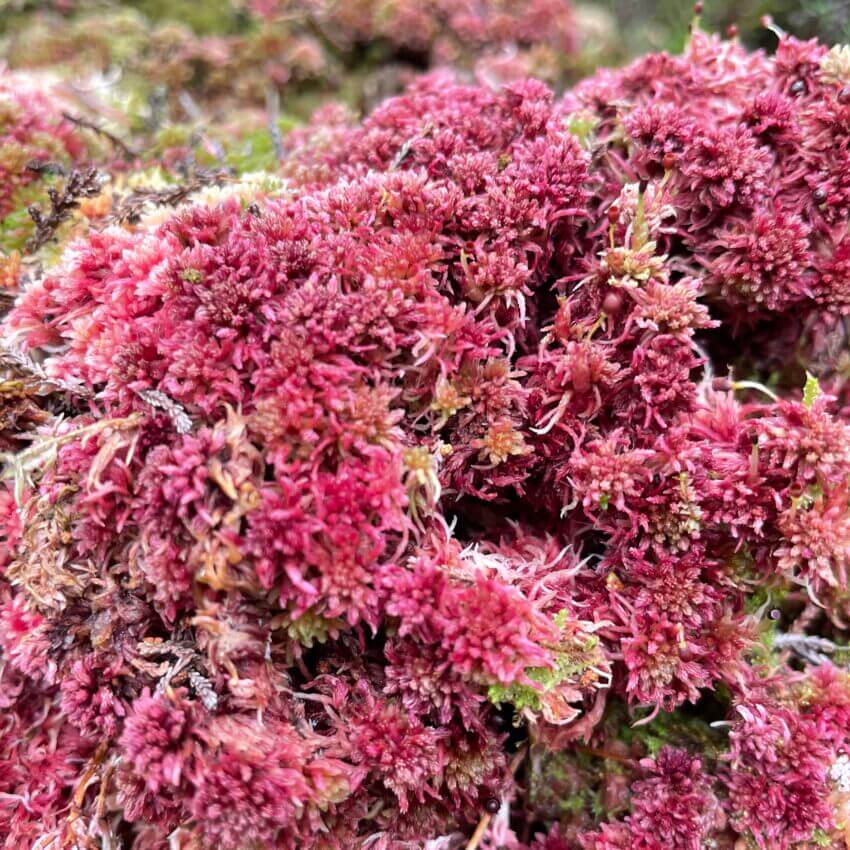
A lush carpet of live sphagnum moss in its natural wetland habitat. Sphagnum moss grows on top of bogs or forest wetlands, where it forms a spongy, green mat. Harvesting only the top layer of this living moss (and doing so in patches) allows the moss to regenerate and continue supporting the ecosystem.
Importantly, sphagnum moss is a renewable resource when harvested responsibly. In nature, as the top layer of sphagnum grows, the older portions beneath die and become compressed – eventually forming peat. But the live top moss can regenerate relatively quickly if some is removed and conditions remain wet. In fact, carefully harvested sphagnum can regrow in the same area within a few years (often in about 5–6 years for bogs). This regenerative quality is why sphagnum moss, when gathered ethically, is considered a sustainable alternative to peat.
What Is Peat Moss?
Peat moss (also called “sphagnum peat moss”) is not a different plant – it’s actually the dead, decomposed material derived from sphagnum moss and other organic matter that has accumulated over centuries in waterlogged areas. As layers of sphagnum die and sink below the bog surface, they decay very slowly (due to low oxygen and high acidity) and compress into peat. This peat forms the foundation of bogs and peatlands, often many meters deep, but it develops over thousands of years. When you buy a bag of “peat moss” at a garden center, you’re getting this dried, crumbly brown material – partially decomposed moss and plant remnants mined from peat bogs.
Peat moss is valued in horticulture for its ability to hold water and its soil-conditioning properties. It is acidic (high in tannins) and can retain up to 70% water by weight. Peat is sold compressed in bales and typically has a fine, homogenous texture. It’s lightweight and sterile, making it a popular component of potting mixes and garden soil amendments, especially for acid-loving plants like blueberries or for seed starting. However, peat moss is a finite resource: it takes such a long time to form that, for all practical purposes, any peat we use far exceeds the rate at which nature can replace it. This slow formation and the way peat is harvested have significant environmental implications, which we’ll explore below.
:
Key Differences
Sphagnum Moss vs. Peat Moss:
Even though peat and sphagnum come from the same plant, they differ in form, function, and environmental impact. Here’s a clear breakdown of the difference between peat moss and sphagnum moss:
Form and Appearance
Sphagnum moss is the living, top layer of moss, usually green and fluffy with long strands (when dried, it appears as pale, tan stringy fibers). Peat moss is the dead, decomposed layer underneath, brownish in color, with a soil-like or fibrous texture. Peat often contains a mixture of decayed moss, other plant material, and even insect remnants, whereas sphagnum moss (when harvested live) is pure moss tissue
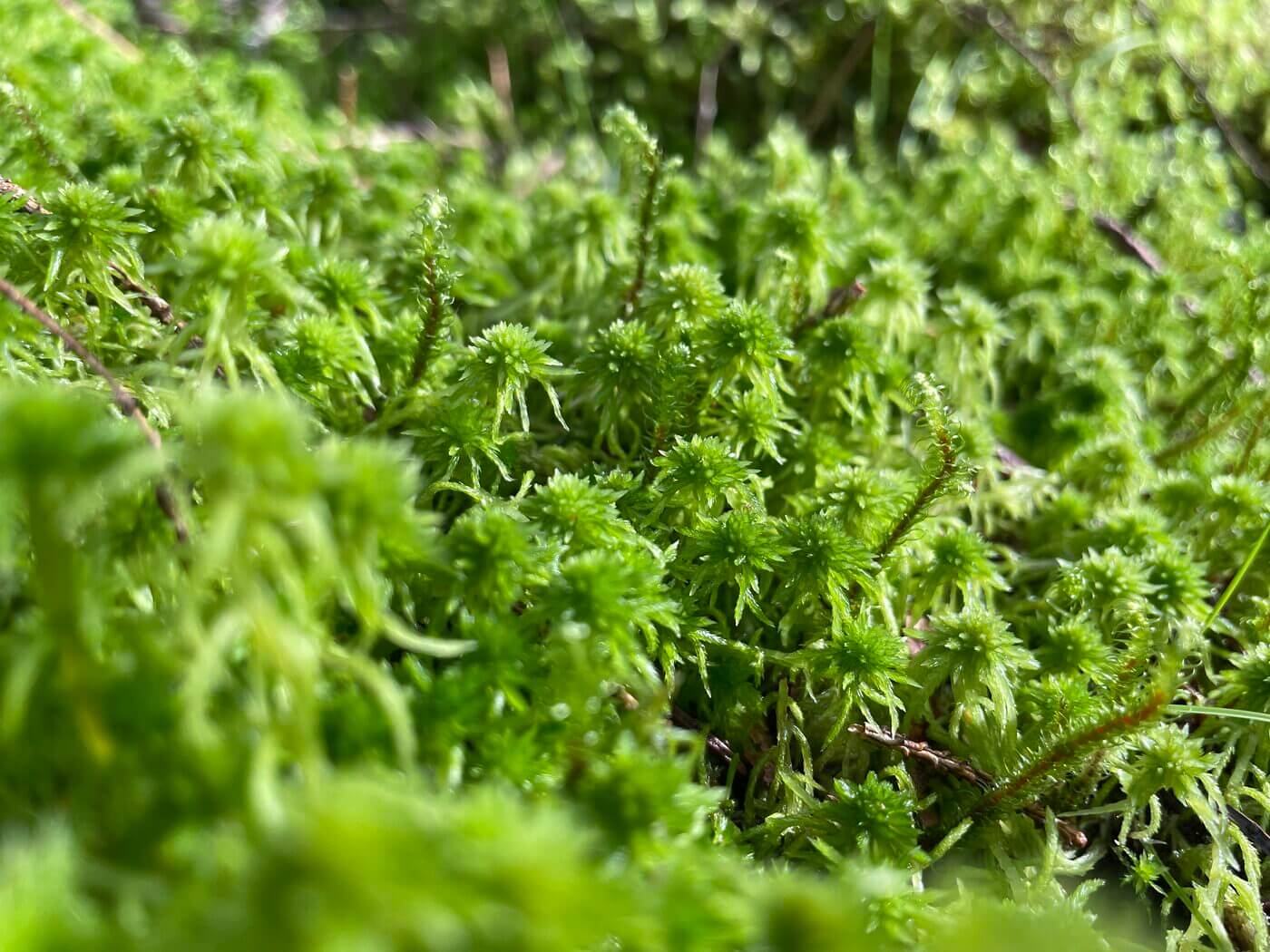
Physical Properties
Sphagnum moss has neutral pH, making it gentle for a variety of plants. It’s prized for excellent water retention and aeration; the long fibers can hold moisture around plant roots while still providing airflow. It’s pliable and often used whole (e.g., to line hanging baskets or create moss poles). Peat moss, by contrast, is acidic and highly absorbent (often up to 15–20 times its weight in water). When dry it’s very light, but it can become compacted in soil over time. Peat is usually mixed into soil to improve water retention and acidity for plants that require it.
Uses in Gardening
Sphagnum moss (usually sold dried or live) is commonly used for orchids, carnivorous plants, and terrariums, as well as for propagation (to keep cuttings moist) and decorative soil toppers. It’s also used in floral arrangements and craft projects (like kokedama string gardens or living wreaths). Peat moss is primarily used as a soil amendment or ingredient in potting mixes – for example, in seed-starting mixes, vegetable garden soils, and container mixes – especially where moisture retention or increased acidity is desired. Many peat-based composts and potting soils have been the industry standard for years.

Renewability
This is a critical difference. Sphagnum moss, if harvested sustainably, is renewable – the moss can grow back under the right conditions. In contrast, peat moss is essentially non-renewable on human timescales – it accumulates only about 1 millimeter per year in undisturbed peatlands, and a peat deposit can be thousands of years in the making. Once peat is removed, that carbon-rich layer is gone and the bog’s natural function is destroyed (unless intensive restoration is undertaken).
Environmental Impact
Sphagnum moss and peat moss have wildly different impacts when harvested. Harvesting sphagnum moss can be done with minimal ecological disruption – for instance, picking only the top layer in patches allows the moss and the habitat to recover. Harvesting peat moss, on the other hand, is not a sustainable practice: it involves draining wetlands and digging up entire bogs, which destroys the ecosystem and halts its regeneration. We’ll detail more on this below, but simply put, using peat has a far greater environmental cost than using sustainably harvested sphagnum.
Environmental Concerns with Peat Harvesting
Peat bogs and wetlands are often called the “lungs” or carbon sinks of the planet. These bogs cover only ~3% of Earth’s land surface, yet they store about one-third of all soil carbon in the world. That’s more carbon locked away than in all of Earth’s forests, despite their small area. When we mine peat, we release this stored carbon back into the atmosphere as carbon dioxide, contributing to climate change. Additionally, peatlands are unique habitats for wildlife, containing rare plants and animals adapted to wet, acidic conditions. Draining and mining a peat bog not only releases greenhouse gases but also obliterates a specialized ecosystem.
Heavy machinery extracting peat in a bog. Traditional peat harvesting requires draining the water and using heavy equipment to scrape or vacuum up peat moss from deep in the bog. This method devastates the landscape, removing both the live moss and the peat layer, and it can take decades (if ever) for the bog to recover. In many cases, mined peatlands, left without their water and vegetation, turn into barren fields or are converted to other uses, losing their biodiversity.
To harvest peat on a commercial scale, the area is typically drained of water, the entire surface layer of live sphagnum moss is removed and discarded, and then the peat beneath is scraped or vacuumed up. This process halts the natural regeneration of the bog. Studies show that a completely mined peatland, if left to regenerate, may take 10+ years just to establish a new layer of sphagnum (and only if the water conditions are restored and live moss is reintroduced). In many cases, without active restoration, the peatland will not recover at all. By contrast, low-impact sphagnum harvesting keeps the wetland intact (more on that soon).
There’s also the climate angle: as long as a peat bog is intact and wet, it continues to absorb and store carbon dioxide (an acre of sphagnum bog can absorb as much CO₂ as an acre of rainforest). Peat formation locks away carbon in the waterlogged soil. But if you disturb that peat (by drying or mining it), the stored carbon is exposed to air and will oxidize, releasing CO₂ for years. Drained peatlands worldwide contribute a significant chunk of greenhouse gas emissions (estimated 2–4% of human-caused emissions). In short, mining peat moss has a high carbon footprint and environmental cost, which is why many gardeners and regulators are seeking alternatives. (For example, the UK has announced plans to phase out peat in retail horticultural products in favor of sustainable options.)
Finally, consider biodiversity: Peat bogs are home to unique species – from carnivorous plants like sundews and pitcher plants, to migratory birds, insects, and amphibians. A living sphagnum bog is like a miniature nature reserve, and even carefully harvested moss can continue to host wildlife if done in rotations. But if a bog is stripped for peat, those species lose their habitat entirely. This is why using peat-free alternatives is seen as a crucial step for eco-conscious gardeners and why our business focuses on environmentally friendly moss options instead.
Benefits of Using Sustainably Sourced Sphagnum Moss
Excellent for Horticulture
Sphagnum moss is beloved by orchid growers, carnivorous plant enthusiasts, and houseplant hobbyists for good reason. It provides moisture without waterlogging, has a neutral pH, and naturally resists decay a bit longer than other organic materials. When you use sphagnum in potting mixes or as a soil topper, it helps retain moisture for plant roots and increases humidity around the plant. It’s also great for propagation – cuttings readily root in moist sphagnum. Unlike peat, which can repel water if it gets completely dry, sphagnum is easy to re-wet and manage. By using live or dried sphagnum, gardeners can go peat-free without sacrificing plant health.
Ideal for Terrariums and Vivariums
If you’re into moss for terrariums or reptile/amphibian enclosures, sphagnum is a star. Live sphagnum moss creates a beautiful, green ground cover in tropical terrariums and helps maintain high humidity for frogs or reptiles. It also has a natural antimicrobial property, reducing mold growth in those enclosed, damp environments. Because our sphagnum is hand-collected in the wild and shipped fresh, it often comes with beneficial microfauna and is free of the chemicals that might be present in some imported mosses. In contrast, peat isn’t used decoratively – you wouldn’t line a vivarium with raw peat – so sphagnum fills this niche perfectly while being an environmentally friendly moss choice.
Great for Crafts and Floristry
Sphagnum moss has long been used in the floristry and craft world. From making kokedama (moss ball planters) to living wreaths and wall art, live sphagnum is flexible, clean to handle, and aesthetically pleasing. It can be used to wrap orchid roots, create moss poles for climbing plants, or as a natural fill for gift planters. Sustainably sourced sphagnum lets crafters and professionals ensure their projects are green in more ways than one. Plus, since our moss is harvested from regenerating forests (and not taken from protected conservation areas), you can craft with a clear conscience.
Peat-Free Gardening and Soil Health
Many gardeners are now looking for peat alternatives to include in potting mixes – both to reduce environmental impact and because peat supplies are dwindling. Sphagnum moss (along with other materials like coconut coir, wood fiber, or compost) can be part of the solution. While sphagnum moss itself breaks down over time, it conditions the soil as it does, adding organic matter. By going peat-free and using sphagnum, you help drive down the demand for peat mining. Additionally, our live sphagnum moss comes with bits of natural forest material (tiny twigs, leaves, etc. as found in the wild collection). These can enrich soil mixes and provide a more habitat-like environment for soil microbes compared to sterile peat. Ultimately, peat-free gardening with sphagnum supports healthier soil ecosystems and spares the peatlands.
Our Sustainable Harvesting Method vs. Traditional Practices

One of the core values of our business is sustainability in how we source our moss. We want to ensure that using sphagnum moss as a peat alternative truly benefits the environment. Here’s how our harvesting method works and how it differs from destructive peat extraction.
Sourcing from Regenerating Forest
We do not harvest sphagnum from pristine conservation bogs. Instead, we collect our live sphagnum moss from regenerating or operational working forests – areas that are undergoing timber harvest cycles or land management. In these locations, the moss is often growing on the forest floor in wet pockets or depressions. Critically, we target sites scheduled for disturbance (such as clear-cutting or road building for forestry). By collecting the moss before forestry operations begin, we are essentially rescuing the moss that would otherwise be destroyed by heavy machinery. This approach means no additional wild areas are harmed solely for moss harvest; we’re utilizing a by-product of necessary land use.
Hand-Harvesting in Patches
Unlike commercial peat harvesting that uses tractors and vacuums, our moss is hand-picked by experienced harvesters. We gently remove only the top layer of sphagnum moss, and we do so in a patchwork pattern – leaving behind plenty of moss in each area. This technique ensures that the moss bed can regenerate. The remaining moss (and spores or fragments from the harvested patches) will regrow over time, restoring the carpet naturally. By not stripping the moss completely and never digging into the peat layer, we preserve the integrity of the wetland soil and its ability to continue sequestering carbon. It’s a bit like pruning a plant versus uprooting it – our method is a light trim at the surface, whereas peat mining is an uprooting from the roots.
No Drainage or Heavy Machinery
We do not drain water or alter the landscape to gather our sphagnum. We access sites on foot and sometimes with very light equipment, ensuring minimal impact. This is a stark contrast to peat mining, where large areas are drained of water (drastically changing the habitat) and then scraped clean. By leaving water levels and surrounding vegetation intact, the collected areas remain functioning wetlands. In fact, in some of our collection sites, you wouldn’t notice much difference after a season – the moss grows back lush and the area continues to support wildlife. Our ethical harvest is essentially a form of “wildcrafting” that aligns with natural forest use, whereas traditional peat extraction is more like open-pit mining that leaves a scar.
Allowing Natural Regrowth
After harvesting, we often scatter bits of moss or spores back onto the collection site (especially if we gathered thicker patches). This helps accelerate regrowth. Research shows that if you leave the “boundary layer” of moss and peat intact, moss can regrow and carbon stays locked away. We take that principle to heart. Think of it as re-seeding the lawn after you aerate – we make sure the moss can bounce back. In many cases, a harvested patch can be ready for another sustainable harvest in a few years, creating a renewable cycle of moss production that doesn’t require new bogs to be exploited. By contrast, traditional peat sites often lie barren or are turned into something else entirely, never to function as wetlands again.
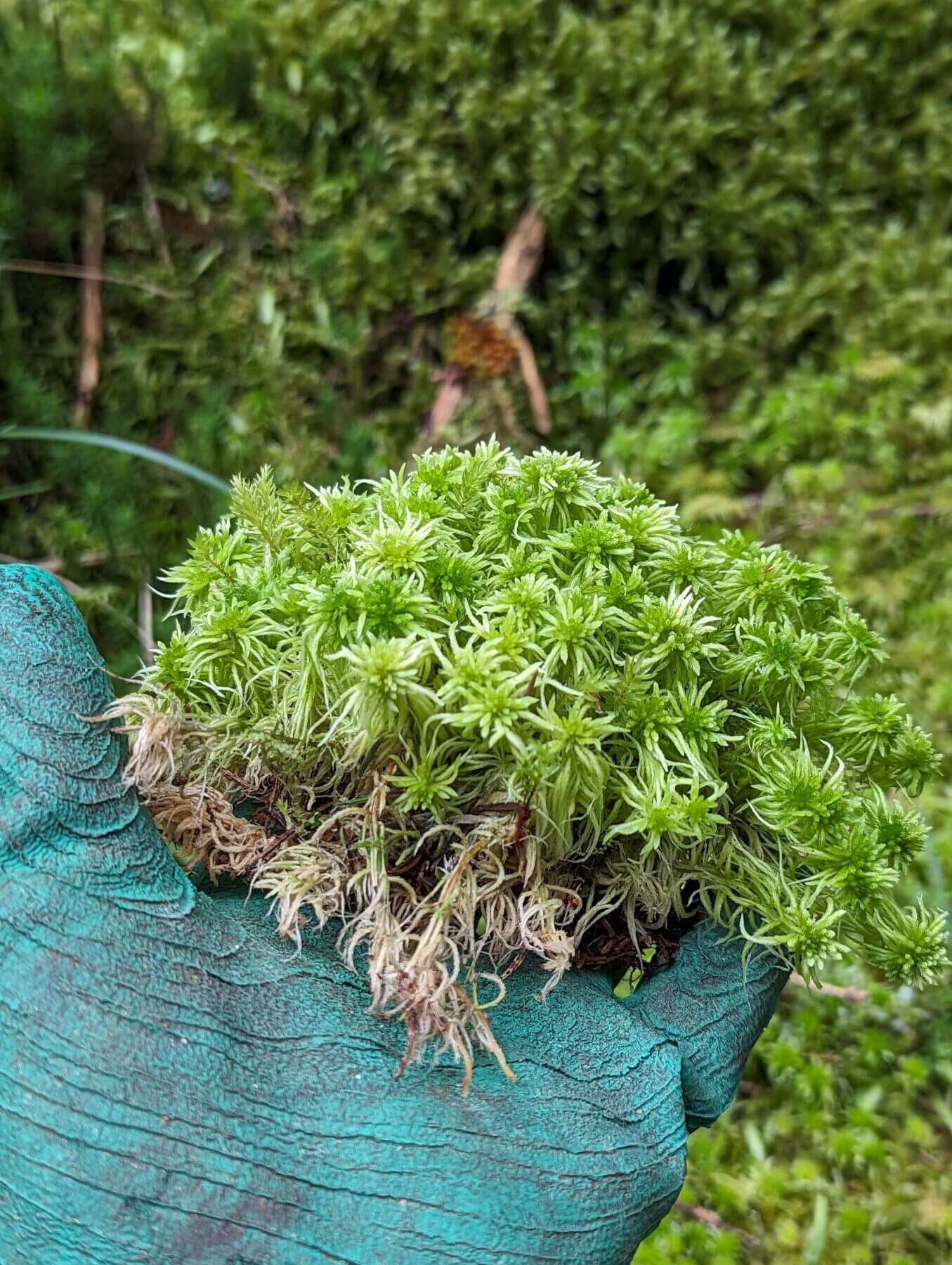
In summary, our harvesting method is low-impact, regenerative, and ethical. We pride ourselves on selling only live sphagnum moss that is sustainably harvested, so gardeners and businesses know that our product did not come at the cost of a destroyed bog. We do everything we can to rescue the moss while allowing it to regrow in suitable conditions.
After carefully hand-collecting small patches, we’ve already seen natural sphagnum regrowth in many of the areas we’ve worked with. Unfortunately, in some locations, past use of heavy machinery has severely disturbed the bog and dried it out, making it unlikely that sphagnum will naturally return—but we are doing everything we can to protect and preserve what’s left.
Each handful of our moss represents material saved from being bulldozed, and by purchasing it, you’re supporting a model of harvesting that puts ecology first.
Conclusion: Embracing Peat‑Free, Eco‑Friendly Moss
Switching from peat moss to sustainably harvested sphagnum moss is a simple yet powerful choice that benefits both your plants and the planet. You now know that while peat moss and sphagnum moss originate from the same source, their differences are profound: sphagnum is renewable and harvested live with care, whereas peat is ancient, irreplaceable, and harvested at great environmental cost. By avoiding peat, you help protect carbon-rich peatlands and fragile wetland ecosystems from destruction. By choosing live sphagnum moss (the kind we offer), you’re getting a versatile, natural material that supports healthy plant growth – from terrariums and orchids to garden beds – all while aligning with your eco-conscious values.
Our business is proud to be part of the peat-free gardening movement, proving that we don’t have to sacrifice performance in our potting media or creativity in our projects to be sustainable. Sphagnum moss is a true peat alternative: it’s effective, renewable, and collected in a way that nurtures the environment rather than depleting it. We hope this guide has clarified the difference between peat and sphagnum moss and why it matters. Whether you’re an everyday gardener, an indoor plant hobbyist, an eco-conscious shopper, or a professional grower, you can make a positive impact by choosing products that are sustainably sourced.
In the end, every terrarium we build, every garden we plant, and every craft we create can be a little greener – literally and figuratively – by opting for live sphagnum over peat. Join us in embracing peat-free gardening with ethical sphagnum moss, and be confident that you’re cultivating not just healthy plants, but a healthier planet as well.
Sphagnum Moss Photos by Highland Moss
Sources
Bonn, A., Allott, T., Evans, M., Joosten, H. and Stoneman, R., 2014. Peatland restoration and ecosystem services: science, policy and practice. Cambridge: British Ecological Society.
British Ecological Society, 2014. The role of peatlands in UK biodiversity and climate regulation. [online] Available at: https://www.britishecologicalsociety.org [Accessed 22 May 2025].
Canadian Sphagnum Peat Moss Association (CSPMA), 2021. Understanding peat moss and sustainable harvesting. [online] Available at: https://www.peatmoss.com [Accessed 22 May 2025].
Centre for Alternative Technology (CAT), 2023. Peat-free gardening. [online] Available at: https://cat.org.uk/peat-free-gardening/ [Accessed 22 May 2025].
Department for Environment, Food & Rural Affairs (DEFRA), 2021. England Peat Action Plan. [online] Available at: https://www.gov.uk/government/publications/england-peat-action-plan [Accessed 22 May 2025].
International Union for Conservation of Nature UK (IUCN UK) Peatland Programme, 2011. Commission of Inquiry on Peatlands. Edinburgh: IUCN UK.
International Union for Conservation of Nature UK (IUCN UK) Peatland Programme, 2020. Peatlands and climate change. [online] Available at: https://www.iucn-uk-peatlandprogramme.org [Accessed 22 May 2025].
Lindsay, R.A., 2010. Peatbogs and carbon: a critical synthesis. [pdf] University of East London. Available at: https://www.iucn-uk-peatlandprogramme.org/sites/default/files/Peatbogs%20and%20carbon%20final%20report.pdf [Accessed 22 May 2025].
Moors for the Future Partnership, 2022. Why peat bogs matter. [online] Available at: https://www.moorsforthefuture.org.uk/our-resources/why-peat-bogs-matter [Accessed 22 May 2025].
Natural England, 2010. England’s peatlands: Carbon storage, biodiversity and evidence for restoration. [pdf] Available at: https://publications.naturalengland.org.uk/publication/30021 [Accessed 22 May 2025].
Royal Horticultural Society (RHS), 2023. Why we’re going peat-free. [online] Available at: https://www.rhs.org.uk/soil-composts-mulches/peat [Accessed 22 May 2025].
RSPB, 2021. Peat use and extraction. [online] Available at: https://www.rspb.org.uk/our-work/our-positions-and-casework/our-positions/peat [Accessed 22 May 2025].
Scottish Environment Protection Agency (SEPA), 2020. Peatland restoration and peat extraction guidance. [pdf] Available at: https://www.sepa.org.uk/media/281890/peatland-restoration.pdf [Accessed 22 May 2025].
The Wildlife Trusts, 2023. How to go peat-free in your garden. [online] Available at: https://www.wildlifetrusts.org/actions/how-go-peat-free-gardening [Accessed 22 May 2025].




















